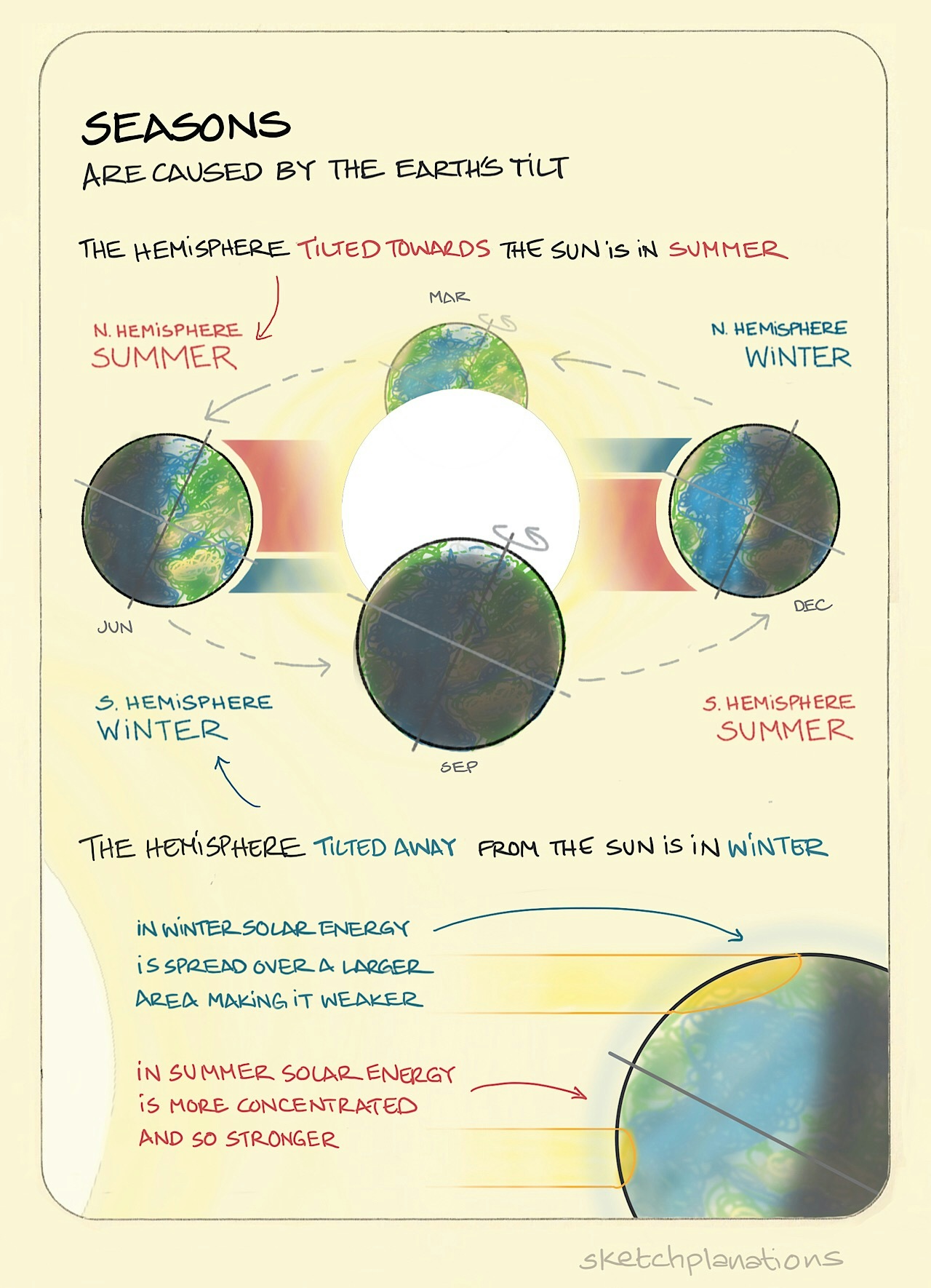Seasons

- Copied!
👇 Get new sketches each week
The Earth’s tilt causes the changing seasons. As the Earth revolves around the sun, the tilt of its axis—23.5 degrees—causes the two hemispheres, North and South, to be either tilted towards the sun or away from it at different times of the year.
In Winter, because light from the sun hits at a greater angle and closer to the poles, the solar energy gets spread over a larger area. This makes it weaker and cooler and gives rise to colder weather (aka winter).
In summer, the sun's light hits more directly and is closer to the equator, so it’s concentrated on a smaller area, leading to hotter days.
Because of the tile of the earth, seasons are reversed in the two hemispheres, so if it’s winter in the Northern Hemisphere, it’s summer in the Southern and vice-versa. The further from the equator you go, the bigger the effect of the seasons. As an example, temperatures in Ecuador stay relatively constant throughout the year, while the poles experience extremes of 24-hour daylight or 24-hour night and great freezes and thaws.
A version of this sketch, along with a number of other planetary and seasonal ideas, features in my book Big Ideas Little Pictures
Also see:

